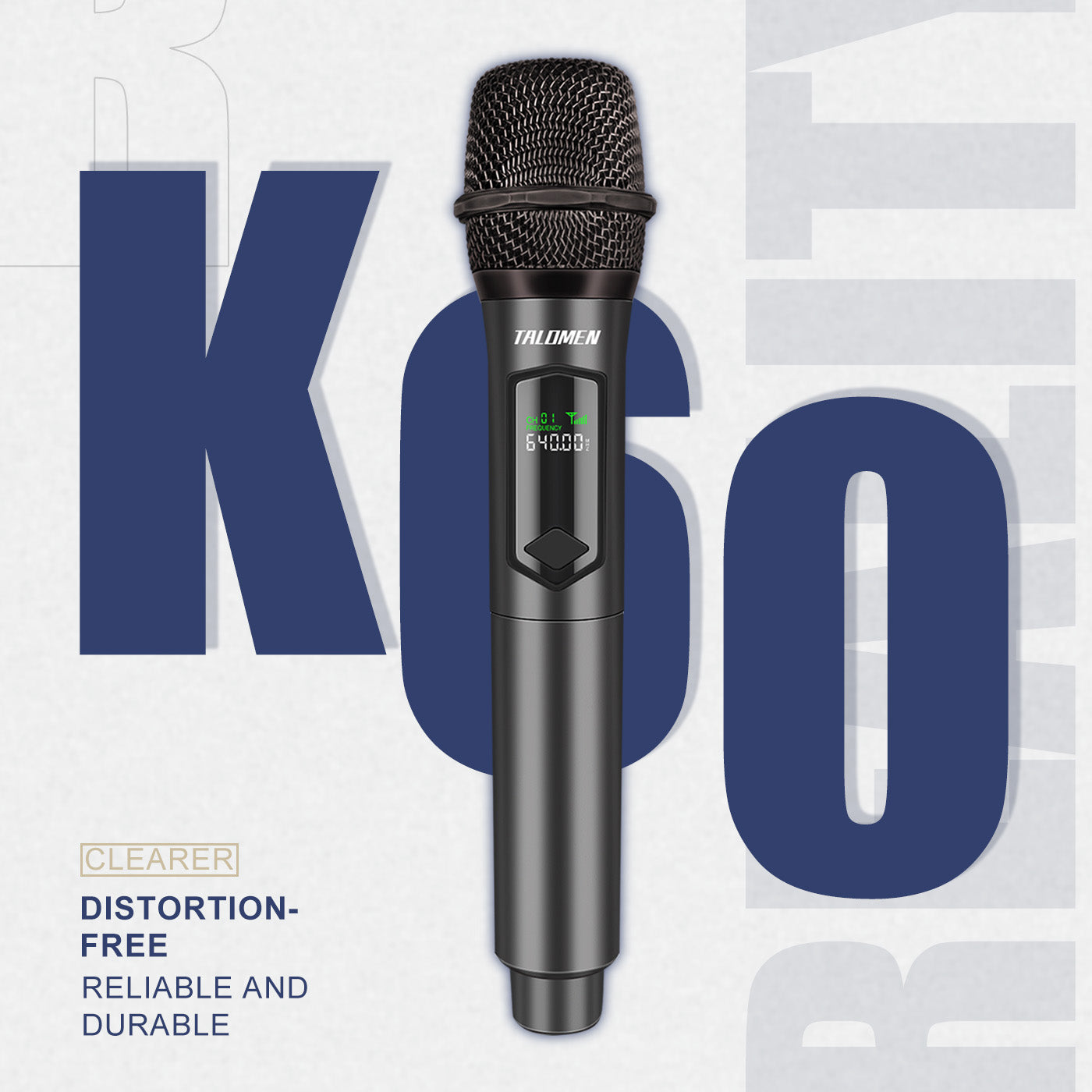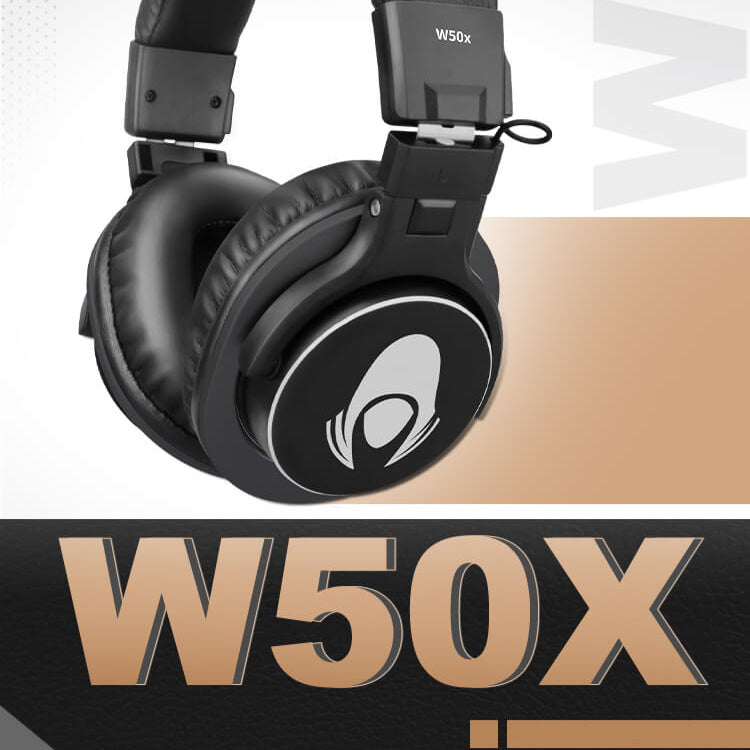Whether you’re performing on stage, speaking at an event, or setting up a karaoke night, choosing the right wireless microphone is essential. But with so many options — from handheld to clip-on, from 2.4GHz to UHF — how do you know which one is right for your needs?
In this guide, we’ll explore the types of wireless microphones, compare their key differences, and help you find the best fit for your use case.
1. Based on Form Factor: The 3 Main Types
🎤 Handheld Wireless Microphones
These are the most common type. You hold them in your hand — just like a traditional mic — but without the cable.
- Best for: Live singing, Karaoke, Public speaking
👉 Try the Talomen K60 Wireless Microphone — a lightweight 2.4GHz microphone system that's perfect for beginners and casual use.
🎙️ Lavalier (Clip-On) Wireless Microphones
Also known as lapel mics, these small, clip-on mics are discreet and hands-free.
- Best for: Interviews, Presentations, Vlogging
🎧 Headset Wireless Microphones
Worn over the head or around the ear, headset mics are ideal when you need your hands free.
- Best for: Fitness instructors, Theatrical performances, Stage events
💡 Many wireless headset mics use UHF for a more stable connection in busy environments.
2. Based on Frequency: 2.4GHz vs UHF Wireless Mics
🔹 2.4GHz Wireless Microphones
These use the global 2.4GHz frequency band (also used by Wi-Fi and Bluetooth).
- Easy to use
- Globally license-free
- Minimal setup
Best for: Home karaoke, Beginner singers, Small indoor events
✅ The Talomen K60 offers a stable 2.4GHz microphone system with excellent clarity and plug-and-play ease.
🔸 UHF Wireless Microphones
UHF (Ultra High Frequency) systems operate on broader frequency bands, reducing interference and improving signal range.
- Stronger signal stability
- Less drop-out
- Better for multi-mic setups
Best for: Stage performances, Outdoor events, Weddings
🎤 Need professional range? The Talomen K120 is a high-quality UHF wireless mic designed for long-range use in complex environments.
3. Battery Type: Rechargeable vs Replaceable
Today’s best wireless microphones often use 18650 rechargeable batteries, providing convenience and cost savings.
Both the K60 and K120 offer:
- Up to 10 hours of use
- Reliable performance
- Environmentally-friendly usage
🔋 If you're looking for a rechargeable battery microphone, these models are solid choices for long performances.
4. What’s Best for Your Needs?
| Type | Best For | Frequency | Example |
|---|---|---|---|
| Handheld (basic use) | Karaoke, casual singing | 2.4GHz | Talomen K60 |
| Handheld (pro use) | Events, weddings | UHF | Talomen K120 |
| Lavalier | Interviews, YouTube | Varies | Coming soon |
| Headset | Fitness, live theater | Often UHF | Third-party |
Conclusion
There’s no one-size-fits-all solution when it comes to wireless microphone systems. Consider:
- Your environment (indoor vs outdoor)
- Usage level (beginner vs professional)
- Connectivity (2.4GHz vs UHF)
- Power source (rechargeable vs replaceable)
Looking for something simple and powerful?
🎤 Explore Talomen K60 for plug-and-play karaoke and speaking, or the K120 for a UHF wireless mic built for serious performers.



![How to Learn Singing for Beginners? [Step-by-Step Guide to Start Singing with Confidence]](http://talomen.ca/cdn/shop/articles/a-very-confident-girl-is-singing-with-a-handheld-microphone-in-a-home-environment-the-horizontal-talomen-brand-words-can-be-vaguely-seen-under-the-microphone-mesh-head_1d7d4d48-2365-4_c2a6634b-ac28-4990-943e-614da91c7082.png?v=1754470966&width=1536)

Deixar comentário
Este site é protegido por hCaptcha e a Política de privacidade e os Termos de serviço do hCaptcha se aplicam.